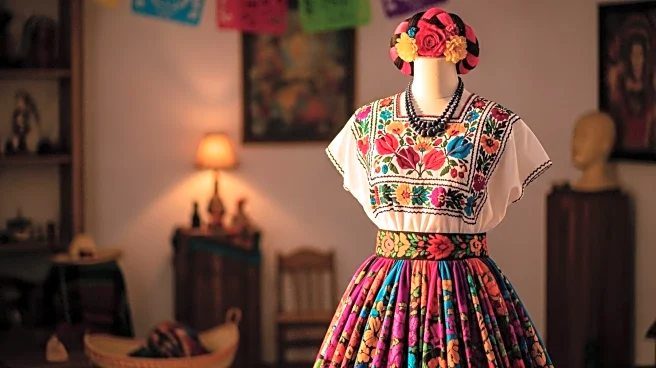What's Happening?
The Metropolitan Museum of Art in New York is repatriating an ancient Sumerian sculpture, known as the Vessel Stand with Ibex, to Iraq. This copper-alloy sculpture, dating back to the Early Dynastic II period around 2500 B.C.E., has been studied in collaboration with the Iraq Museum in Baghdad. The research focused on the hollow core lost wax casting technique used in its creation, revealing significant insights into ancient Mesopotamian art. The sculpture, which features lapis lazuli eyes and supported drinking vessels in temple settings, was acquired by the museum in 1974 and has been on display since.
Why It's Important?
The repatriation of the Vessel Stand with Ibex is a significant cultural event, highlighting the importance of returning artifacts to their countries of origin. This move not only restores a piece of Iraq's heritage but also underscores the historical significance of Mesopotamia as a cradle of civilization. The research conducted on the sculpture provides valuable insights into ancient art techniques, contributing to the understanding of early human history and artistic development. The return of such artifacts strengthens cultural ties and acknowledges the rightful ownership of historical treasures.
What's Next?
Following the repatriation, the Metropolitan Museum of Art plans to inaugurate new galleries for ancient West Asian and Cypriot art in 2027. These galleries will cover regions from the eastern Mediterranean coast to Central Asia, showcasing the rich cultural heritage of these areas. The museum's ongoing efforts to study and repatriate artifacts may lead to further collaborations with international institutions, enhancing global cultural exchange and understanding.
Beyond the Headlines
The repatriation of the sculpture reflects broader ethical considerations in the art world regarding the ownership and provenance of cultural artifacts. It raises questions about the responsibilities of museums in preserving and returning items to their countries of origin. This event may influence future policies and practices in the art community, encouraging more institutions to examine their collections and engage in restitution efforts.












